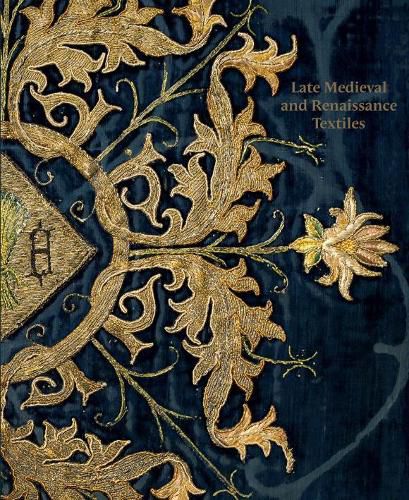Readings Newsletter
Become a Readings Member to make your shopping experience even easier.
Sign in or sign up for free!
You’re not far away from qualifying for FREE standard shipping within Australia
You’ve qualified for FREE standard shipping within Australia
The cart is loading…






This publication, the first of its kind in many decades, draws together thirty-six rare and sumptuous European textiles created between the late fourteenth and late sixteenth centuries. After goldsmiths work, tapestries and embroideries were among the costliest art forms of the Middle Ages, due to their precious materials and the countless hours required to produce them. Whether hung on the wall or worn about the person, textiles provided a potent display of their owners’ wealth and status. Their vivid decoration also provided the perfect backdrop for courtly pageants, royal ceremonies, and liturgical festivals. Even the quickest glance at late medieval paintings shows just how forcefully textiles shaped the visual texture of the occasions they depict. Though always the works of specialist craftsmen, in the later Middle Ages textiles were often made following designs supplied by the leading painters and designers of their age. Yet only a tiny fraction of what was made has survived. The fragility of the fabrics, light damage and insects, together with alterations of use, have made this material extremely rare. This catalogue includes thirty-six late medieval and Renaissance textiles, many published for the first time, that together span a period of almost two hundred years. They are organised by country, starting with otherwise unrecorded examples of ‘opus anglicanum’ made in English workshops between around 1400 and the eve of the Reformation. They are followed by textiles from France, the Netherlands, Germany, Italy, and Spain. Different materials and classes of textile are grouped together within each of these regional divisions. For instance, liturgical vestments and altar hangings sit side by side with sumptuous velvets and delicately embroidered tablecloths. Together, they encapsulate the incredible breadth of Europe’s flourishing textile industries during this period.
120 colour illustrations
$9.00 standard shipping within Australia
FREE standard shipping within Australia for orders over $100.00
Express & International shipping calculated at checkout
This publication, the first of its kind in many decades, draws together thirty-six rare and sumptuous European textiles created between the late fourteenth and late sixteenth centuries. After goldsmiths work, tapestries and embroideries were among the costliest art forms of the Middle Ages, due to their precious materials and the countless hours required to produce them. Whether hung on the wall or worn about the person, textiles provided a potent display of their owners’ wealth and status. Their vivid decoration also provided the perfect backdrop for courtly pageants, royal ceremonies, and liturgical festivals. Even the quickest glance at late medieval paintings shows just how forcefully textiles shaped the visual texture of the occasions they depict. Though always the works of specialist craftsmen, in the later Middle Ages textiles were often made following designs supplied by the leading painters and designers of their age. Yet only a tiny fraction of what was made has survived. The fragility of the fabrics, light damage and insects, together with alterations of use, have made this material extremely rare. This catalogue includes thirty-six late medieval and Renaissance textiles, many published for the first time, that together span a period of almost two hundred years. They are organised by country, starting with otherwise unrecorded examples of ‘opus anglicanum’ made in English workshops between around 1400 and the eve of the Reformation. They are followed by textiles from France, the Netherlands, Germany, Italy, and Spain. Different materials and classes of textile are grouped together within each of these regional divisions. For instance, liturgical vestments and altar hangings sit side by side with sumptuous velvets and delicately embroidered tablecloths. Together, they encapsulate the incredible breadth of Europe’s flourishing textile industries during this period.
120 colour illustrations